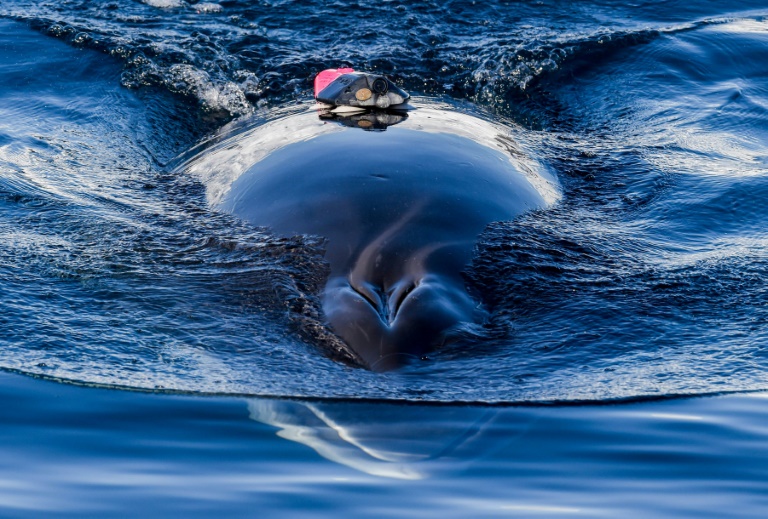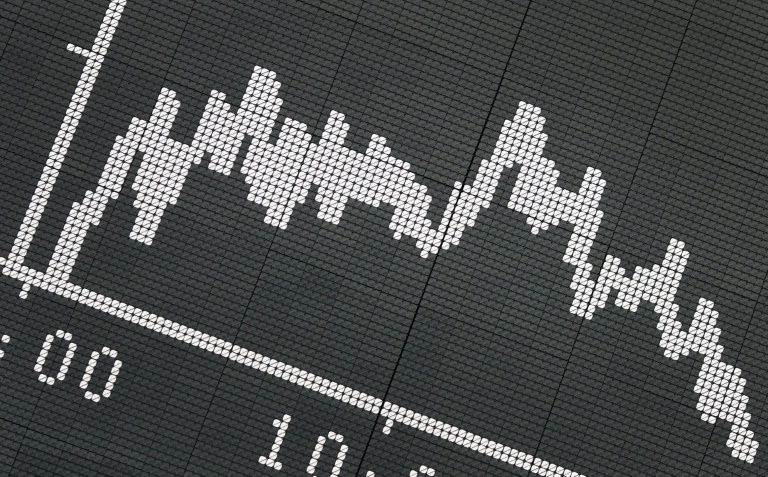The Earth’s largest whales may eat up to three times more than previously thought with crucial benefits for the ecosystems they inhabit, a study said Wednesday.
The largest creatures ever to live on Earth, baleen whales including blue whales, humpback whales and other species use filter feeding to consume krill and small fish.
But their massive size and fragile populations made it difficult to answer a fairly basic question: just how much they eat.
To find out, a study published in Nature describes how researchers placed suction cup tags equipped with movement sensors on 321 whales to monitor their feeding practises.
They used sound waves to measure the density of krill swarms before and after feeding, and found that a single blue whale can eat about 16 tonnes of krill during a feeding day.
“It’s an animal the size of an aeroplane engulfing the volume of a swimming pool in a matter of seconds,” study author Matthew Savoca of Stanford University told AFP.
“Imagine running three marathons while eating as much as possible and doing that most days of a summer feeding season,” he said, “it’s really incredible.”
Using daily measurements for seven species in the Southern Ocean around Antarctica, the study estimates pre-whaling populations may have consumed up to 430 million tonnes of krill annually — twice the total krill estimated to exist on Earth today.
– Positive feedback loop –
After eating massive amounts of iron-rich krill, whales’ waste plays an essential role in making that crucial nutrient available to the rest of the ecosystem — particularly phytoplankton.
All-important phytoplankton are tiny organisms that are not only the base of every open ocean food chain, they also provide much of the Earth’s oxygen and are an important carbon sink.
“In open ocean systems nutrients are hard to come by for phytoplankton,” said Savoca.
“Whales act as these highly mobile krill-recycling machines. The nutrients that the phytoplankton need are locked inside the krill and the whale intestines are used to unlock that iron.”
This positive feedback loop may answer the question of why krill populations have declined along with whales instead of prospering in the absence of the huge predators.
An estimated 1.5 million baleen whales were harvested in the 20th century from the Southern Ocean.
“For blue whales that was over 99 percent of their population,” Savoca says, “No natural system can stand an onslaught like that.”
The study says that if whale populations were to be restored, the positive feedback loop they generate could spark a “green wave” of ocean ecosystem recovery.
It notes that while whaling is currently only allowed by a handful of countries, whales face existential threats from climate change, collisions with large ships and entanglement in fishing nets.
Savoca said that in addition to designating marine protected areas, measures to limit climate change are crucial, as well as regulations on shipping speed and fishing practices.
He said the benefits of whale population recovery would extend to the whole planet.
“Not only will there be more krill, there’ll be more fish and a healthier ecosystem,” he said.
Blue whales can grow up to 34 metres long and weigh over 150 tonnes, making them slightly shorter but far more massive than the 37-metre, 70-tonne Titanosaur, considered to have been the largest dinosaur to have existed.











